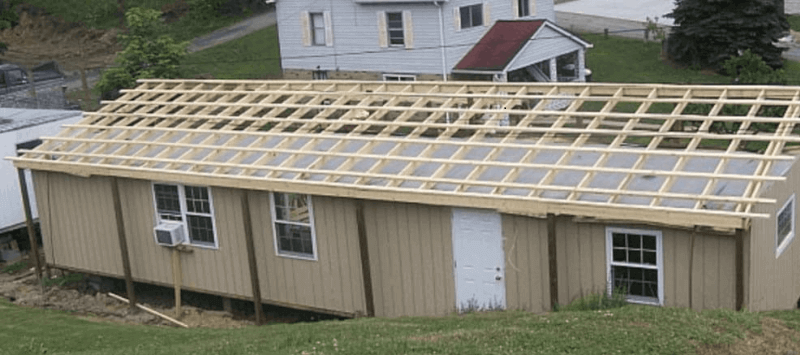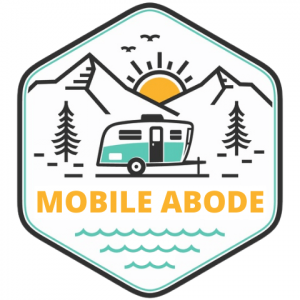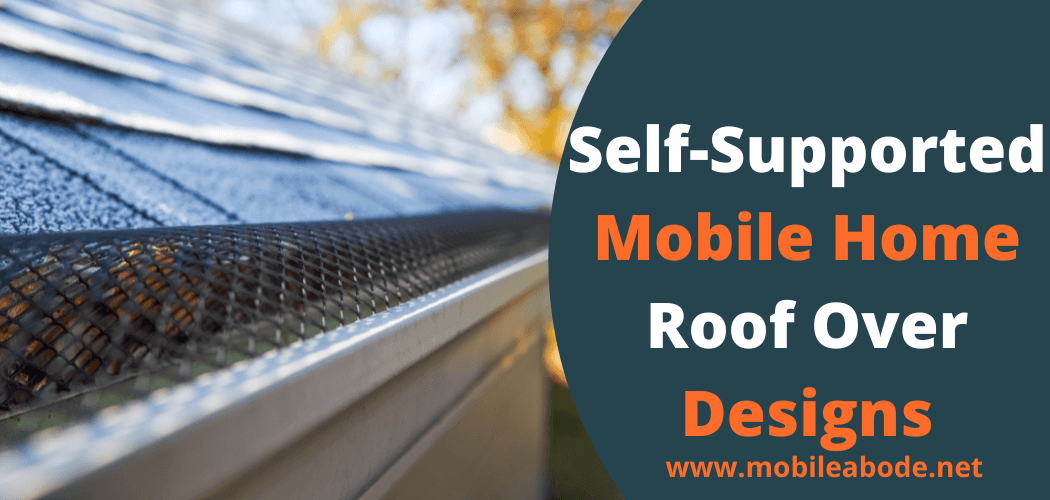If you’re a mobile home owner, then one of the most important decisions you’ll make is what type of roof to put over your head.
There are many different self-supported mobile home roof over designs on the market, so it can be tough to decide which is right for you.
In this blog post, we’ll take a look at some of the best options currently available and help you choose the right one for your needs. Thanks for reading!
What is a Roof over?
A roof over is simply a second roof that is installed over the top of an existing roof.
This can be done for several reasons, including to improve the look of the home, add extra insulation, or protect the original roof from weather damage.
No matter what your reasons are for wanting a roof over, there are many different design options to choose from.
Top 3 Self-Supported Mobile Home Roof Over Designs
1. Gable Roof
One of the most popular roofs designs is the gable roof. This type of roof has two sloping sides that come to a point at the top, sort of like a triangle.
Gable roofs are excellent at shedding water and snow, which makes them a good choice for mobile homes in areas that experience a lot of bad weather.
They’re also fairly easy to construct, which can keep costs down.
2. Hip Roof
Another popular option is the hip roof, which has four sloping sides that all come to a point at the top.
Hip roofs are more stable than gable roofs, so they’re a good choice if your mobile home is located in an area with high winds.
They’re also good at shedding water and snow, and they can add a bit of extra space to your home since all of the sides slopes downwards.
3. Flat Roof
If you’re looking for a roof-over design that’s simple and easy to construct, then a flat roof may be the right choice for you.
As the name suggests, flat roofs are completely level, which makes them much easier to build than either gable or hip roofs.
They’re not as good at shedding water and snow, however, so they’re not the best choice if you live in an area with a lot of bad weather.
How to Choose the Right Self-Supported Mobile Home Roof Over Design
Now that you know some of the most popular self-supported mobile home roof over designs, how do you choose the right one for your needs?
Here are a few things to keep in mind:
1. The climate in your area. If you live in an area with a lot of bad weather, then you’ll want to choose a design that’s good at shedding water and snow, like a gable or hip roof.
On the other hand, if you live in a more temperate climate, then you may be able to get away with a simpler design like a flat roof.
2. The cost of construction. If you’re on a tight budget, then you’ll want to choose a design that’s relatively easy and cheap to construct, like a flat roof.
If cost is no object, then you can choose any design you like.
3. The look of your home. This is mostly a matter of personal preference, but some designs (like gable roofs) are more popular than others.
Think about the overall look you’re going for and choose a design that will complement it.
4. The amount of space in your home. If you’re tight on space, then you may want to choose a design that will add a bit of extra room to your home, like a hip roof.
On the other hand, if you have plenty of space, then you can choose any design you like.
5. The level of expertise of the construction crew. If you’re working with an experienced construction crew, then they’ll be able to handle any design you choose.
However, if you’re working with a less experienced crew, then you may want to stick to a simpler design like a flat roof.
No matter what self-supported mobile home roof over the design you choose, make sure to do your research and work with an experienced contractor to get the best results.
Pros and Cons of Self-Supported Roof Overs
There are both pros and cons to consider when it comes to self-supported roof overs.
Some of the pros include:
- They can provide extra protection for your home against weather damage.
- They can add extra insulation, which can help keep your home warmer in the winter and cooler in the summer.
- They can help improve the energy efficiency of your home.
- They can give your home a more polished and finished look.
- They can add extra space to your home.
Some of the cons include:
- They can be more expensive to construct than other types of roofs.
- They can be more difficult to construct than other types of roofs.
- If they’re not constructed properly, they can cause problems with your home’s energy efficiency.
- If they’re not constructed properly, they can cause leaks and other problems.
- They can be damaged by severe weather if they’re not constructed properly.
If you’re considering a self-supported roof over your home, weigh the pros and cons carefully to decide if it’s the right choice for you.
Installation Tips for a self-supported roof over
If you’ve decided that a self-supported roof over is the right choice for your home, then here are a few tips to help you get the best results:
- Make sure to work with an experienced contractor who has experience installing this type of roof.
- Make sure the contractor follows all local building codes.
- Make sure the contractor uses high-quality materials.
- Inspect the roof regularly to make sure it’s in good condition and there are no leaks.
- Repair any damage to the roof as soon as possible to prevent further damage.
By following these tips, you can help ensure that your self-supported roof over is installed properly and lasts for many years.(Mobile Home Roofs Life)
How to building a floating roof over a mobile home?

Installing a self-supported roof over on your mobile home is a big job, so it’s important to make sure you’re prepared before you get started.
Here are a few things you’ll need to do:
- Choose the right location for the roof. You’ll want to choose a spot that’s level and has good drainage.
- Clear the area around the location of any trees, shrubs, or other obstacles.
- Excavate the area around the location to a depth of about 18 inches.
- Level the excavation and then fill it with gravel to create a foundation for the roof.
- Install the support posts for the roof. The posts should be made of treated lumber and should be at least 8 feet tall.
- Install the rafters for the roof. The rafters should be made of treated lumber and should be at least 8 feet long.
- Install the plywood sheathing on top of the rafters.
- Install the roofing material of your choice.
- Inspect the roof regularly and repair any damage as soon as possible.
How to Putting a Pitched Roof on a Flat Roof Mobile Home?
If you have a mobile home with a flat roof, you may be considering installing a pitched roof. Pitched roofs can provide better protection against the elements and can improve the look of your home.
Installing a pitched roof is a big job, so it’s important to make sure you’re prepared before you get started. I have already explained some steps above those will helps you while putting a pitched roof on a flat roof mobile home.
What are mobile home roof trusses?
There are several different types of mobile home roof trusses, but the most common is the flat roof truss.
Flat roof trusses are made up of two rafters that meet at a peak in the middle of the roof.
The rafters are then connected with metal plates or brackets.
Flat roof trusses are the strongest type of mobile home roof truss, but they’re also the most expensive. If you’re on a budget, you may want to consider installing gable roof trusses instead.
Gable roof trusses are similar to flat roof trusses, but they have a sloped peak instead of a flat one. This type of truss is less expensive than a flat roof truss, but it’s not as strong.
If you live in an area with severe weather conditions, you may want to consider installing hurricane ties to help reinforce your mobile home’s roof.
Do mobile homes need roof vents?
Most mobile homes will need some form of roof venting, whether it’s a gable end vent, ridge vent, or power vent. The type of vent you’ll need will depend on the climate you live in and the type of roof you have.
If you live in an area with mild weather conditions, you may be able to get away with just a gable end vent.
A gable end vent is a small opening at the end of the gable, which allows air to flow in and out of the attic. If you live in an area with hot summers and cold winters, you’ll probably need a ridge vent.
A ridge vent is a long, continuous vent that runs along the peak of the roof. It allows hot air to escape in the summer and prevents moisture from entering the attic in the winter.
If you have a flat roof, you’ll need a power vent. A power vent is a motorized vent that helps to remove hot air and moisture from the attic.
You should consult with a professional before installing any type of roof vent.
Conclusion:
If you are looking for the best self-supported mobile home roof-over designs, be sure to consider all of your options.
Not only will this help to keep you and your family safe, but it can also add some extra style and personality to your home. What design will you choose for your next project?

